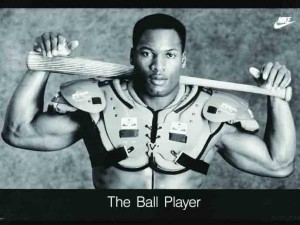Welcome to the APSA: A New Professional Sports League Based on Loyalty and Longevity
 I believe that franchise loyalty to the community and player loyalty to the franchise are my two highest values regarding pro sports.
I believe that franchise loyalty to the community and player loyalty to the franchise are my two highest values regarding pro sports.
As I’ve been thinking about this, I have come up with the perfect design of a professional sports organization that would foster these values.
We’ll call it the American Professional Sports Association (APSA). The new league has some very different features than its competitors.
First, the local community must have a majority stake in the ownership of the team. Ownership can be divided between private enterprise, wealthy individuals, local governments, players, and fans. But at least 51 percent of ownership must be local.
Second, franchises would not be portable. According to the charter of the new league, a franchise would be permanently located in the community in which it is established.
Third, the new league would involve three major sports. A franchise would compete in football, basketball, and baseball. Hockey could be added as a fourth sport, if desired, either at the formation of the league or at any time in the future. It is also possible that soccer could be added at some point.
Thus, the same colors, logos, mascots, and nicknames would be used for each team, like high school or college sports.
So, for instance, if you are the new Buffalo franchise, your basketball, baseball, and football teams would all be the Buffalo Bisons (or whatever).

Multiple sport athletes like Bo Jackson would be the norm in the APSA.
Fourth, athletes would be under contract with the franchise and would be asked to play as many sports as practical, again, similar to high school. Therefore, a player that could go two ways, like Bo Jackson, would do so. Those who aren’t able to star in a second or third sport could still play a substitution role.
The practical result of this arrangement is that composite payroll would be cheaper. Rosters could be filled with players who excel at other sports but can play as well as a third stringer in a second or third sport. Athletes would also be expected to make their primary residence the city in which the franchise is located.
Fifth, all players would receive a base salary determined by number of years played and number of sports played. In addition, players would receive bonus money for playing time, meeting production goals, and for team position in standings. Bonuses would be played for each level of post-season play to which a team advances.
Finally, players would receive dividends related to the profitability of the franchise.
The above compensation structure rewards players for actual performance and balances rewards between individual achievement and team success.
Also, the system would be designed to minimize player mobility. Player contracts would be permanent, not term limited. Part of a player’s contract is equity in the franchise.
If a player were traded to another team, the equity would be traded with him and would have to be an even exchange so a team that is of lesser value would have to give up more equity to a player coming to a team of greater value.
Personnel changes would be made only for the right reasons (strategy or chemistry), not for owner or player greed.
The new league would begin with six franchises in the six largest metropolitan areas currently without any major league sports that make the best bid to join the league. Places such as Hampton Roads, VA, Birmingham, AL, Tulsa, OK among others could be included.
Once the league is considered stable, it would then begin attempting to expand and compete directly with markets that have at least one other major league franchise.
I believe that this model would be more effective and successful over a long term and would eventually bury the current model being used for professional sports leagues because relationships between the franchise and the community and the players would be much stronger and deeper over time.
Because players are paid equally for individual achievement, team achievement, and financial success of the franchise, a culture of team play and salary restraint would be fostered in a way that cannot be fostered in the current model.
Ultimately players and owners would have the potential to be enriched as much or more by participation in the APSA than in the other leagues, but not without truly earning it on all three levels.
John Howell is a regular contributor to Sports Then and Now.